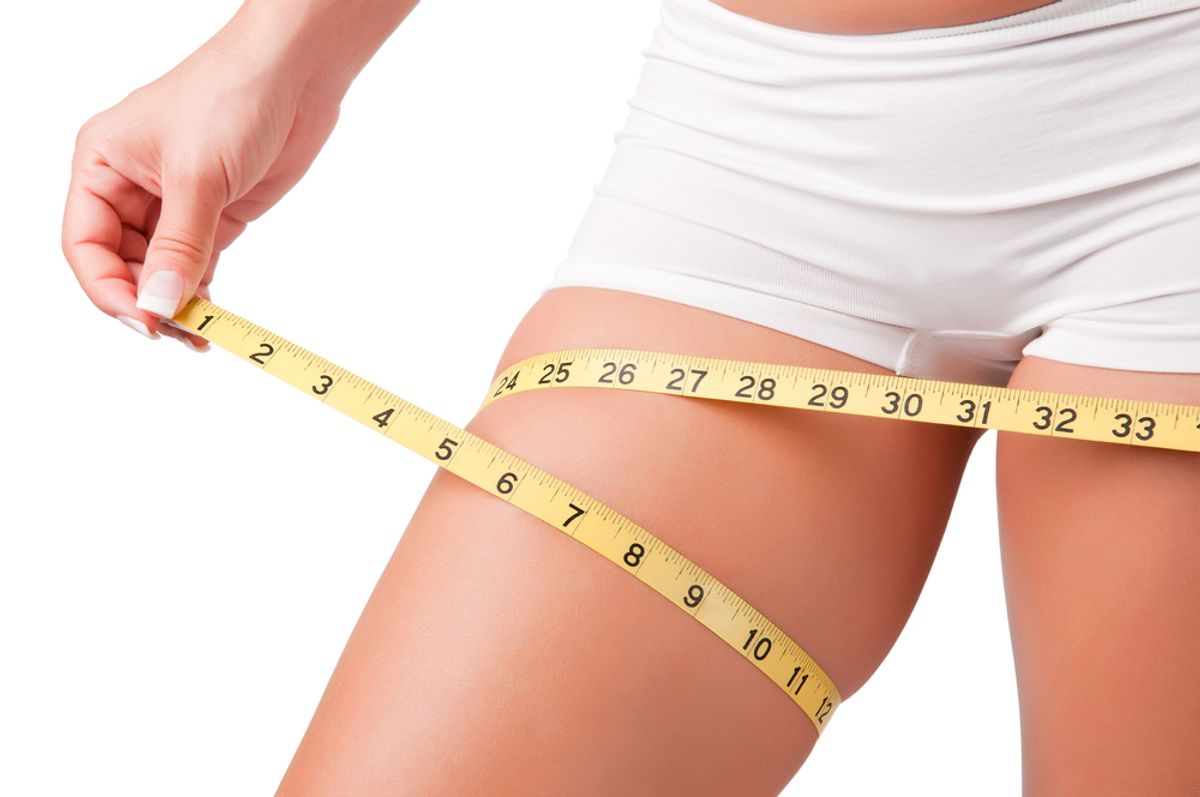Urban Outfitters is starting the year off in an entirely unsurprising way: by facing complaints over offensive content on its website. This time, though, the issue has little to do with racist office parties or needlessly insensitive merchandise. Instead, the company has been reprimanded by the UK's Advertising Standards Authority, which last week required Urban Outfitters to remove an image of an "unhealthily thin" model from its website. According to the ASA order, the photo could promote eating disorders and is considered "harmful."
The image in question (which can be seen at BuzzFeed) shows the bottom half of a thin lingerie model donning a pair of mesh underwear, and was flagged by the ASA after a complainant questioned the slimness of the woman's thighs and calves, which appear to be similar sizes. The watchdog group, which regulates "misleading, harmful or offensive" advertisements, reportedly considered the model's size before requiring Urban Outfitters to remove the image, and "noted, in particular, that there was a significant gap between the model's thighs, and that her thighs and knees were a similar width." The ruling goes on to say:
We considered that the model looked underweight in the picture. We understood that Urban Outfitters' target market was young people and considered that using a noticeably underweight model was likely to impress upon that audience that the image was representative of the people who might wear Urban Outfitters' clothing, and as being something to aspire to. We therefore concluded that the ad was irresponsible.
Urban Outfitters representatives have maintained that the ad is in keeping with common practice for lingerie modeling, and also asserted that they do not have reason to believe the model is underweight. The company replaced the image with a notably different one, which shows a different model in the same mesh briefs whose legs are crossed and whose thighs purposely overlap.
But regardless of whether or not the original model -- or any of the many other very thin women who appear in the company's advertisements -- is, indeed, underweight, the ASA's move might actually raise more questions than Urban Outfitters' marketing strategy does. Like why we should be banning this one photo of one woman's skinny legs while similar images appear on the site, or why we think demonizing one model is going to fix our very broken ideals of what is pretty.
While the ban on the image is no doubt intended to prevent the perpetuation of unhealthy, often unattainable beauty standards -- especially among young women -- it comes at the cost of continuing to shame certain bodies, specifically those that are romanticized most. What does not get called into question in the ASA complaint or in the ruling is whether or not the image was photoshopped -- to expand the width of the model's "thigh gap," to shrink her down to an "ideal" size and to manipulate the desires of a public that consumes her body to shape its own desires.
Assuming the advertisement was not photoshopped, the perception of danger in this one woman's body morphs into something else: the same sort of body shaming that the ASA and activists hope to avoid by diversifying ads. It's the same problem, flipped the other way. Bans on certain women's bodies -- and not on the act of manipulating those bodies -- still requires that we single out some women for the way they look and tell them that their bodies are not acceptable.
And as much as the skinny young girls of the world might grow up to be glorified for their long, lithe forms, they do not deserve to be shamed as a quicker fix for our problematic beauty standards. The problem is with the unattainable ideals themselves -- not with the women whose bodies are used to illustrate them.

Shares